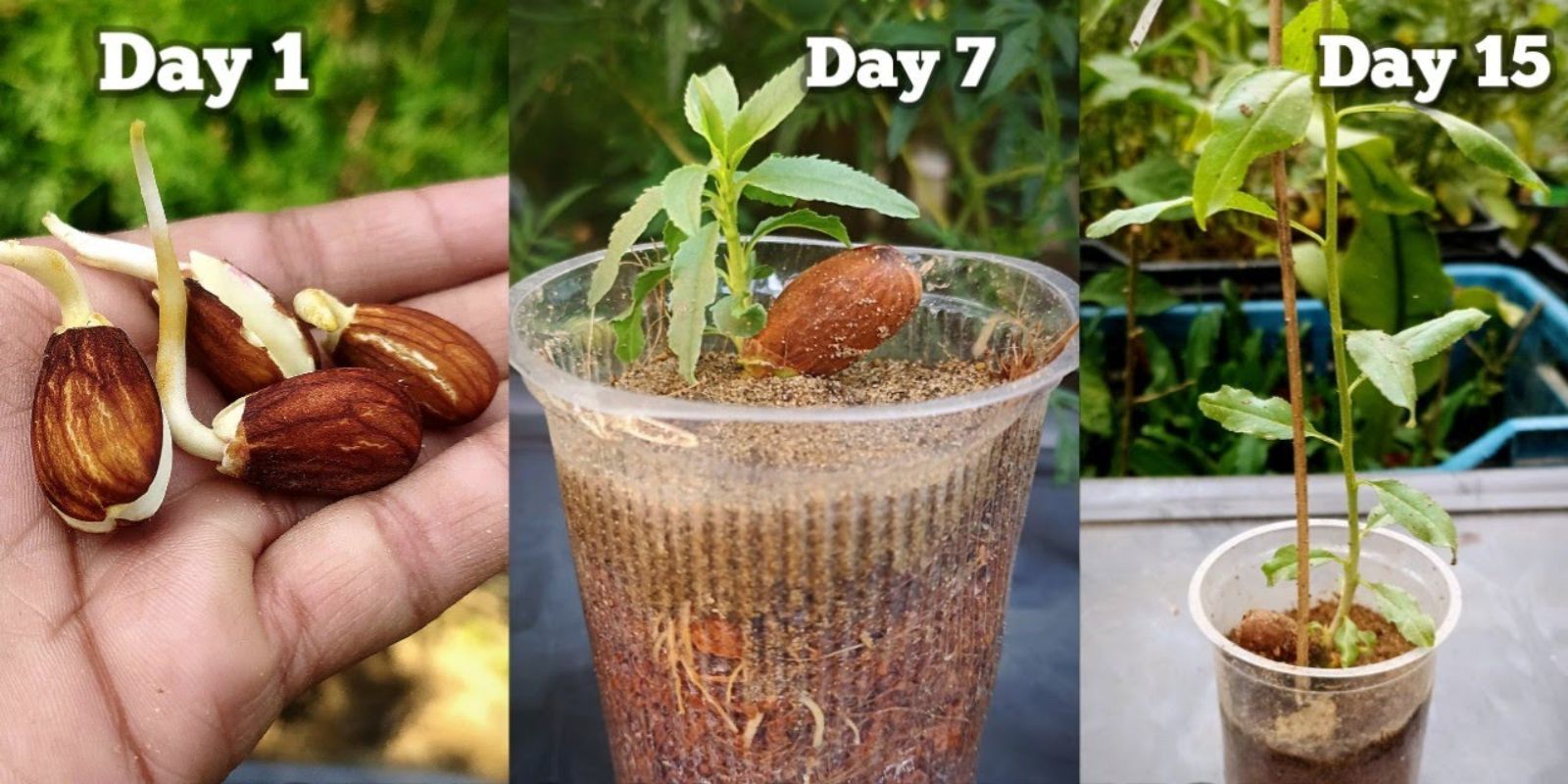Almond trees are versatile, beautiful, and rewarding additions to any home garden. Whether you dream of harvesting your own crunchy almonds or simply want to enjoy the tree’s ornamental appeal, growing an almond tree at home is an achievable goal with the right approach. This guide provides all the information you need to nurture your own almond tree from seed or sapling to full maturity.
Why Grow an Almond Tree at Home?
Growing your own almond tree offers multiple benefits:
- Fresh, Organic Nuts: Homegrown almonds are free from pesticides and additives.
- Aesthetic Appeal: The tree boasts stunning pinkish-white blossoms in spring, adding beauty to your garden.
- Environmental Impact: By growing your own nuts, you reduce the carbon footprint associated with store-bought almonds.
- Sustainability: Almond trees can thrive for decades, making them a long-term investment for your garden.
Getting Started: What You Need to Know
Before diving into the steps, it’s essential to understand the tree’s basic requirements:
- Climate: Almond trees thrive in Mediterranean climates with hot summers and mild winters.
- Sunlight: Full sun exposure (6–8 hours daily) is crucial for healthy growth.
- Soil: Well-draining soil with a pH between 6 and 7 is ideal.
- Space: Almond trees need room to grow. If planting multiple trees, ensure proper spacing.
Step-by-Step Guide to Growing an Almond Tree
1. Choose the Right Almond Variety
Almond trees come in different varieties, including sweet and bitter almonds. Sweet almond varieties, such as ‘Nonpareil’ or ‘Mission,’ are best suited for home gardens. Make sure to pick a variety that grows well in your region.
2. Source Seeds or Saplings
- Seeds: Buy unshelled almonds labeled as raw or untreated. Avoid roasted almonds as they won’t germinate.
- Saplings: For a faster-growing tree, purchase a young almond sapling from a local nursery.
3. Pre-Sprouting Almond Seeds (Optional)
If starting from seeds, pre-sprouting increases the chances of germination:
- Soak almonds in water for 48 hours.
- Place them in a plastic bag with moist sand.
- Refrigerate the bag for 6–8 weeks to simulate winter conditions (cold stratification).
4. Prepare the Planting Area or Container
- In-Ground Planting: Choose a sunny spot with well-draining soil. Loosen the soil and mix in compost to improve fertility.
- Container Planting: Use a large pot (at least 20 gallons) with drainage holes. Fill it with a mix of potting soil and compost.
5. Plant the Almond Tree
- For seeds, plant 1–2 inches deep in the soil with the pointed end facing down.
- For saplings, dig a hole twice the size of the root ball and gently place the tree inside. Backfill with soil, ensuring the graft union remains above ground.
6. Watering
Water the tree deeply after planting. Keep the soil consistently moist but not waterlogged during the first year. Once established, almond trees are drought-tolerant but benefit from occasional deep watering during dry spells.
7. Fertilizing
Almond trees require nutrients to thrive:
- Apply a balanced fertilizer (10-10-10) annually in early spring.
- Use organic compost or manure to enrich the soil naturally.
8. Pruning for Health and Productivity
Pruning is essential for maintaining the tree’s structure and encouraging fruit production:
- Prune in late winter or early spring when the tree is dormant.
- Remove dead, diseased, or crossing branches.
- Maintain an open canopy to improve airflow and sunlight penetration.
9. Encourage Pollination
Almond trees are not self-pollinating, so you’ll need a second tree of a compatible variety nearby. Alternatively, hand-pollinate the blossoms using a soft brush to transfer pollen.
10. Pest and Disease Management
Common almond tree pests include aphids, spider mites, and scale insects. Treat infestations with organic solutions like neem oil or insecticidal soap. To prevent fungal diseases, ensure good airflow and avoid overwatering.
11. Harvesting Almonds
Almonds typically begin producing nuts 2–4 years after planting:
- Watch for hulls to split open, signaling the nuts are ready to harvest.
- Shake the tree or use a pole to knock almonds onto a tarp.
- Remove the outer hulls and allow nuts to dry in a warm, shaded area for 1–2 weeks.
Tips for Success
- Choose a Good Location: Almond trees need full sun and well-drained soil to prevent root rot.
- Be Patient: Almond trees take time to mature, but the rewards are worth the wait.
- Invest in Quality Seeds or Saplings: Healthy starting material ensures robust growth.
- Monitor Pests and Diseases: Early intervention prevents significant damage.
- Stay Consistent: Regular care, including watering, pruning, and fertilizing, is key to a thriving tree.
Growing Almonds in Containers
If you have limited space, you can grow an almond tree in a pot:
- Use dwarf almond varieties.
- Repot the tree every 2–3 years as it grows.
- Keep the pot in a sunny location and protect it from extreme weather.
Benefits of Growing Your Own Almonds
- Cost-Effective: Save money on store-bought almonds.
- Fresh and Organic: Enjoy nuts free from preservatives and chemicals.
- Sustainable Living: Reduce your environmental footprint by growing your own food.
- Aesthetic Value: Almond trees enhance the beauty of your garden.
Conclusion
Growing an almond tree at home is a rewarding experience that brings beauty, sustainability, and delicious nuts to your garden. With proper care and patience, you’ll enjoy the fruits of your labor for years to come.
Are you ready to start your almond-growing journey? Share your thoughts or questions below and inspire others to join the gardening movement! 🌳🌟
Viral Gardening Hashtags:
#GrowYourOwnFood #AlmondTree #HomeGardening #NutHarvest #SustainableLiving #EdibleGarden #BackyardFarming #OrganicGardening #NatureLovers

